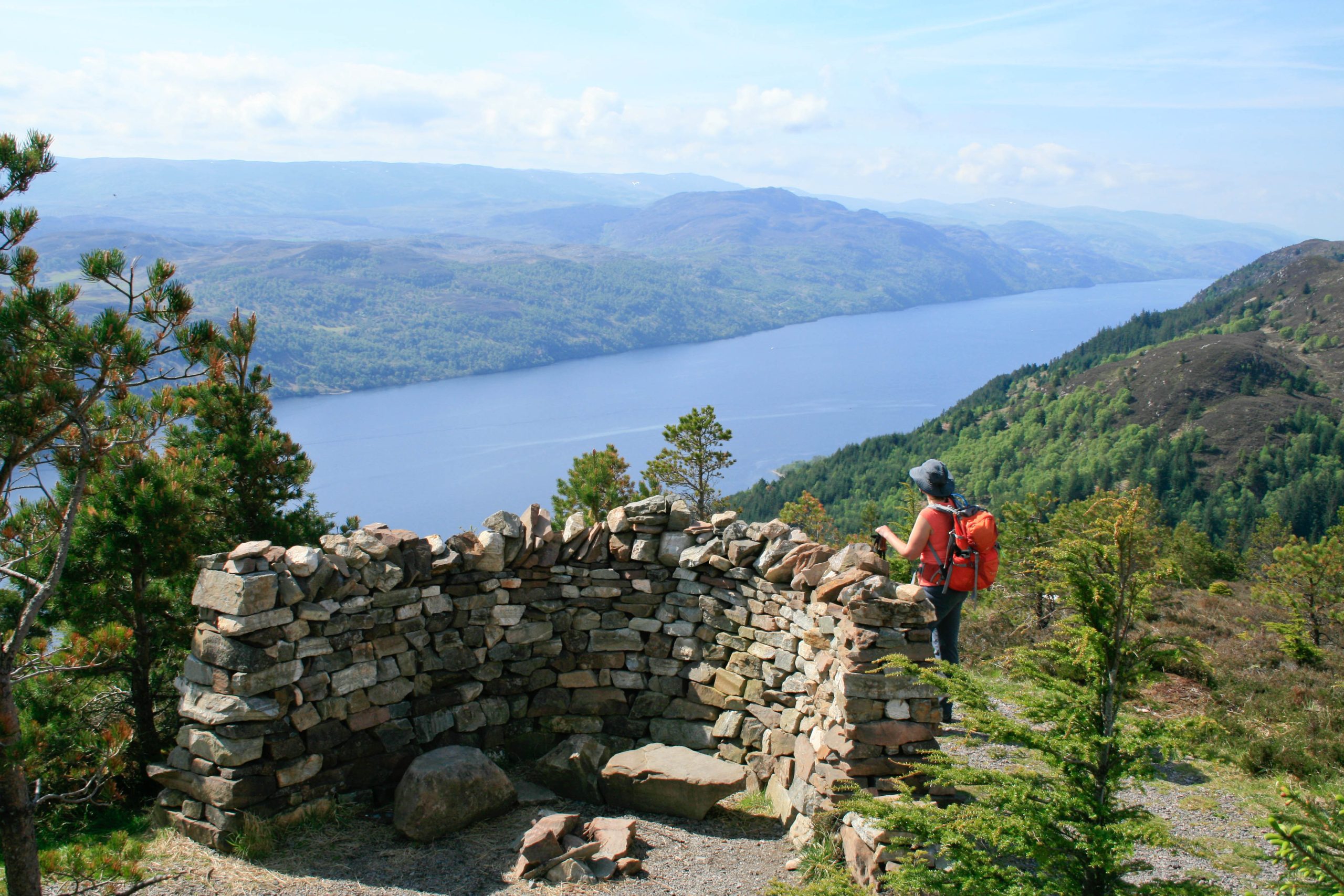
Route Overview
Where is the Great Glen Way & Loch Ness?
The Great Glen Way & Loch Ness, a cherished part of Scotland’s official Great Trails, was established in 2002. Stretching for 127km (79 miles) from the western town of Fort William in the Scottish Highlands to the eastern city of Inverness. It is customary to embark on the Great Glen Way & Loch Ness from west to east, aligning with the prevailing wind.
Along this route, awe-inspiring and atmospheric landscapes unfold, showcasing some of Scotland’s most breathtaking scenery. Hikers are treated to uninterrupted vistas of the expansive Loch Linnhe and Loch Oich, while passing through enchanting forests that overlook the deep and enigmatic Loch Ness. Keep a keen eye out for the legendary ‘Loch Ness Monster,’ although you might be left waiting, as Loch Ness is the largest lake in the UK by volume.
Why should you walk the Great Glen Way & Loch Ness?
Experience timeless Scottish Highland scenery with lochs, forest trails and heather covered hills, and maybe even catch a glimpse of “Nessie”, the Loch Ness Monster! Follow this stunning coast-to-coast hiking trail all the way across Scotland, as you trace the route of the Caledonian Canal from Fort William on the Atlantic to Inverness on the North Sea. Enjoy spectacular surroundings, minus the climbing, as most of this relatively gentle hike keeps to lower levels of the Great Glen.
For those willing to spend a little more energy in exchange for more dramatic views across Loch Ness there is also a higher-level route option between Fort Augustus and Drumnadrochit. Visit the iconic Urquhart Castle on the shores of Loch Ness. The famous ruins of this 13th Century stronghold will give you a taste of how it felt to live during medieval Scotland.
When is the best time to walk the Great Glen Way & Loch Ness?
The climate of Scotland is temperate, and tends to be very changeable. It’s not uncommon to experience all four seasons in one day! The warmest months are July and August with temperatures at an average 17°C. Rain falls throughout the year and April, May and June are normally the driest months.
Annual rainfall in the western Highlands can be more than 3,000mm while the east coast receives an average of less than 800mm. The prevailing winds are from the west and southwest are a constant feature in the Highlands.
How long does it take to hike the Great Glen Way & Loch Ness?
The 127km (79 miles) long Great Glen Way & Loch Ness trail usually takes between 4 and 9 days to complete. This depends on the pace you walk it, fitness levels and what activities and attractions you may like to visit along the way.
At Hillwalk Tours, we offer Gentle, Moderate and Challenging tour grading levels depending on the balance of physical challenge and comfort level that you require. Within these levels, you can choose between 4 to 9-day hiking tours to complete the full trail or part of it. All you have to decide is how many kilometres / miles you would like to walk per day and we’ll take care of the rest!
Tour Route
Types of Trails
Choosing the right hiking tour for you can be, at times, tricky. It is always important to consider your own physical capability and comfort levels.
For example, at Hillwalk Tours, we have grouped each trail route we offer into three categories depending on personal preference and fitness levels. These are – gentle, moderate, and challenging. Each of these categories, depending on the destination, will include anything from 4 to 13-day itineraries, with customers given the option to add rest days where they see fit.
Our gentle hikes are perfectly suited for those who would consider themselves as a part-time hiker who enjoys taking photos and meeting locals while taking in the spectacular scenery. Our moderate hikes will suit people who are used to regular exercise and appreciate the opportunity of covering plenty of ground each day without going beyond their limits. Finally, our challenging hikes are for hikers who look to set off early in the morning and not stop until they have reached their destination.
With regards to our Great Glen Way & Loch Ness trail, we offer a range of 4 to 9-day hikes across gentle, moderate and challenging levels. Each of these hiking categories cover the following average hiking distance and time each day:
Gentle: 15-17km or 9.5-11 miles and between 4-6 hours per day
Moderate: 18-22km or 11-14 miles and between 4-7 hours per day
Challenging: 26-30km or 16-19 miles and between 5-8 hours per day
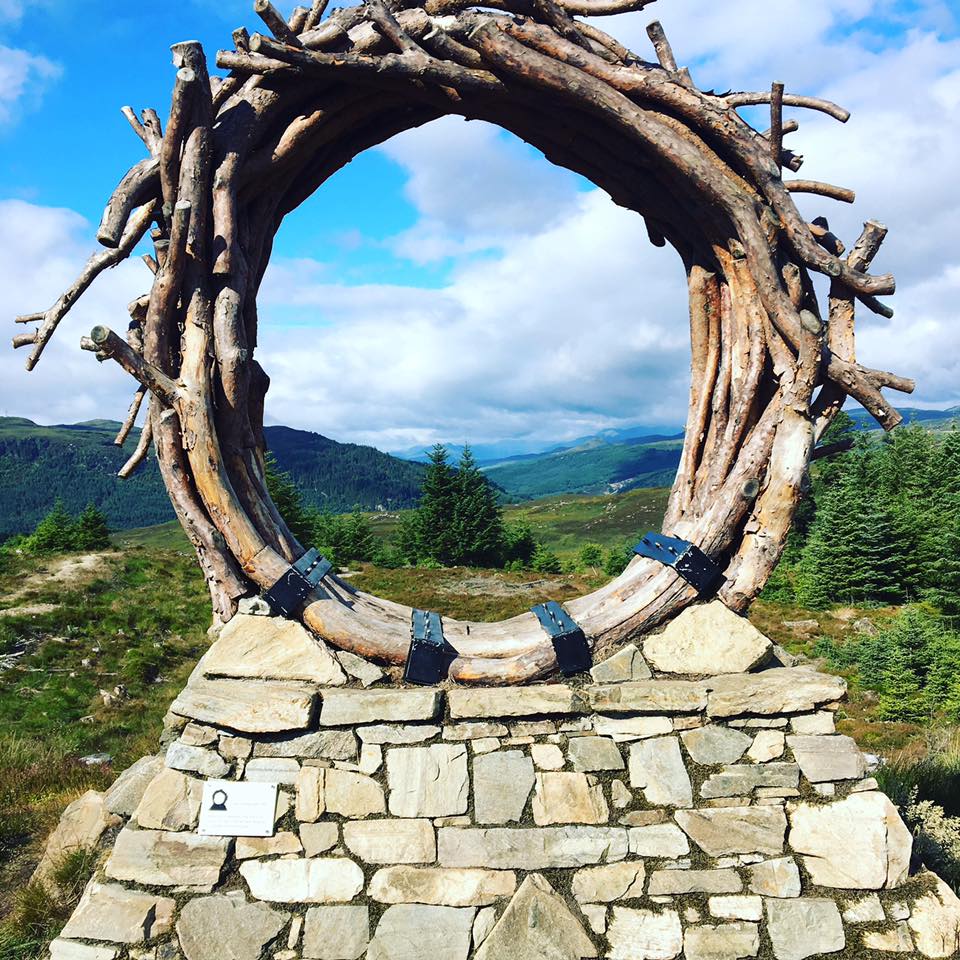
Hillwalk Tours Guide Notes
If you decide to walk the trail with Hillwalk Tours, you will receive a detailed walking pack once you have fully booked your hiking holiday. This walking pack will include detailed maps and unique route notes and walking directions written and constantly updated by our route development team. By personally walking each trail and creating our own detailed route notes, it allows us to provide more itineraries, route options and alternatives than what you will typically find across generic guidebooks. It also includes GPS tracks meaning you will never have to worry about getting lost.
Starting and Finishing Point
The trail commences from the edge of Loch Linnhe, a sea loch that opens out onto the Atlantic Ocean. The route takes you to the various freshwater lochs, which make up the Caledonian Canal inland waterway. For those “Nessie” believers, this majestic waterway is linked to the magical Loch Ness, where you will have the opportunity to see if you can spot the mythical monster. The way heads into open moor and farmland before entering the hustling, bustling streets of Inverness where the route finishes. Much of the route follows forest tracks and roads as well as the well-maintained and mostly level towpaths of the Caledonian Canal. For the more experienced walker, a more challenging route with more climbs and slightly more rugged terrain is available.
Sample Great Glen Way & Loch Ness Itineraries
The following are examples of Hillwalk Tours Gentle, Moderate and Challenging itineraries of hiking the Great Glen Way & Loch Ness:
Day 1: Arrival in Invermoriston
Day 2: Alltsigh to Drumnadrochit (11.2 or 18km)
Day 3: Blackfold to Drumnadrochit (17km or 10.6 miles)
Day 4: Blackfold to Inverness (14km or 8.7 miles)
Day 5: Departure from Inverness
Day 1: Arrival in Fort Augustus
Day 2: Fort Augustus to Invermoriston (14 or 12km / 8.7 or 7.5 miles)
Day 3: Invermoriston to Drumnadrochit (22 or 24km / 14.9 or 13.7 miles)
Day 4: Blackfold to Drumnadrochit (17km or 10.6 miles)
Day 5: Blackfold to Inverness (14km or 8.7 miles)
Day 6: Departure from Inverness
Day 1: Arrival in Fort William
Day 2: Fort William to Spean Bridge (23km or 14.3 miles)
Day 3: Spean Bridge to Laggan (29 or 25km / 18 or 15.5 miles)
Day 4: Laggan/Invergarry to Invermoriston (29 or 25km / 18 or 15.4 miles)
Day 5: Invermoriston to Drumnadrochit (24 or 22km / 14.9 or 13.7 miles)
Day 6: Drumnadrochit to Inverness (31km or 19.3 miles)
Day 7: Departure from Inverness
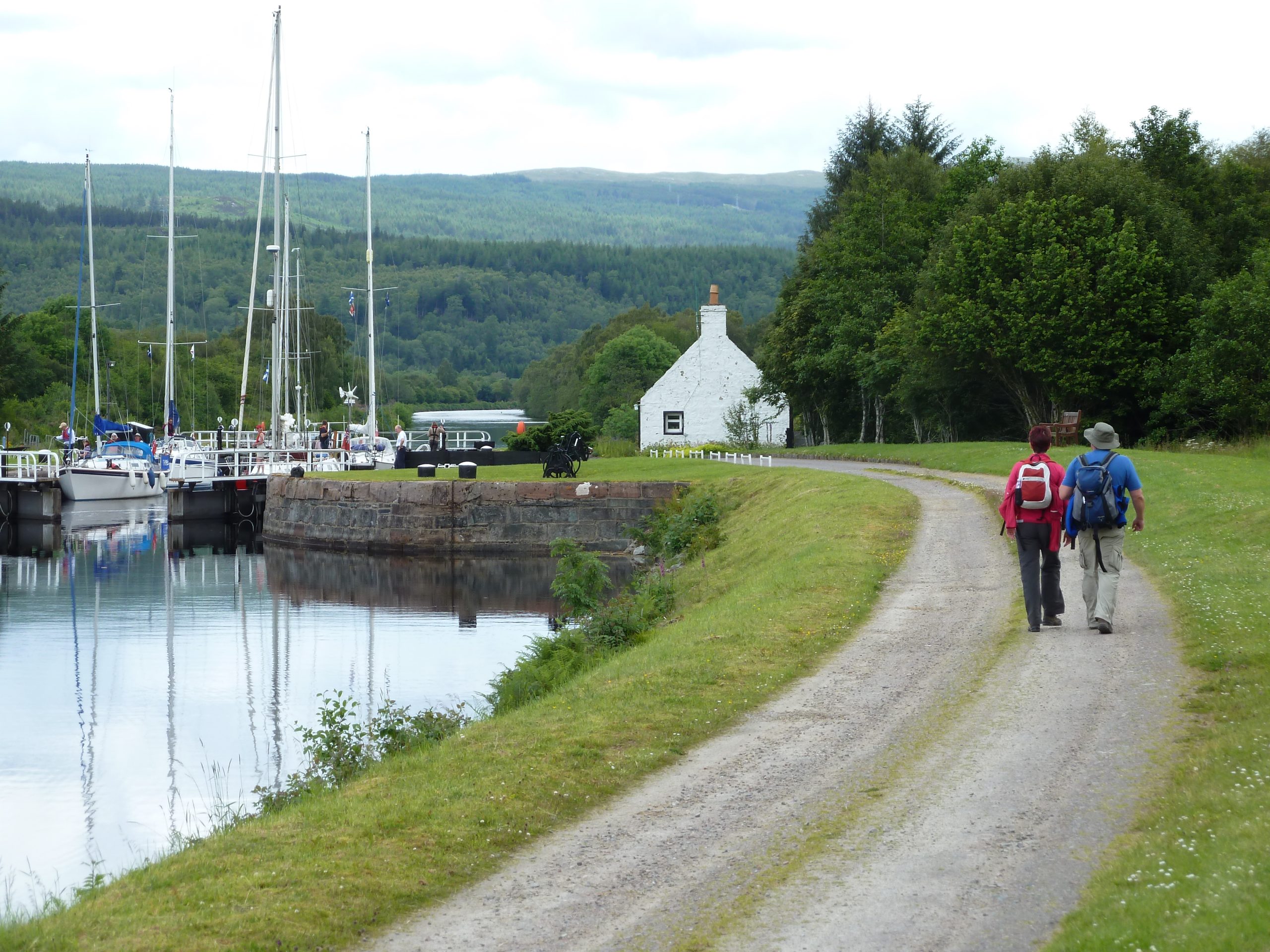
Hillwalk Tours Great Glen Way & Loch Ness Map
The Great Glen Way & Loch Ness Terrain
Waymarking
The Great Glen Way & Loch Ness is generally very well sign-posted throughout its entirety. You will regularly see a blue and black signpost throughout which will help indicate your every next turn, making it significantly difficult for you to get lost or take the wrong turn.
If you are ever in doubt, you can also check the Hillwalk Tours turn by turn directions and route notes including GPS coordinates. We also supply all you need to know about local information and history as you pass, along with trail alternatives and other activities.
Want to learn more about how to read a map? Check out this blog post.
Difficulty
Much of the route follows forest tracks and roads as well as the well-maintained and mostly level towpaths of the Caledonian Canal. The new higher route options (from Fort Augustus to Invermoriston, and Invermoriston to Drumnadrochit) offer a more challenging walking experience with more climbs and slightly more rugged terrain. The high-level moorland around Blackfold between Drumnadrochit and Inverness can be exposed to the elements.
Aggregate ascent over the whole route is approximately 2,600m, and there are very few sustained or steep climbs. The highest point on the Way is 422m above sea level, on the slopes of Creag Dhearg, which is just above Alltsigh.
Sights & Attractions
Loch Ness
Loch Ness is a famous and vast freshwater loch stretching 37 kilometers (23 miles) southwest of Inverness. Named after the River Ness, which flows from its northern end the loch is is steeped in mystery and legend, being world-renowned for its association with the mythical Loch Ness Monster (affectionately known as ‘Nessie’). See below for more on Nessie. Loch Ness is the largest lake by volume in the UK, containing more water than all the lakes in England and Wales combined. It reaches depths of up to 230 meters (755 feet). The Caledonian Canal which connects the east and west coasts of Scotland also passes through Loch Ness. For those interested in wildlife Loch Ness and its surrounding areas are home to a variety of species including red deer, ospreys, and pine martens. The loch itself is rich in fish, making it a popular spot for anglers.
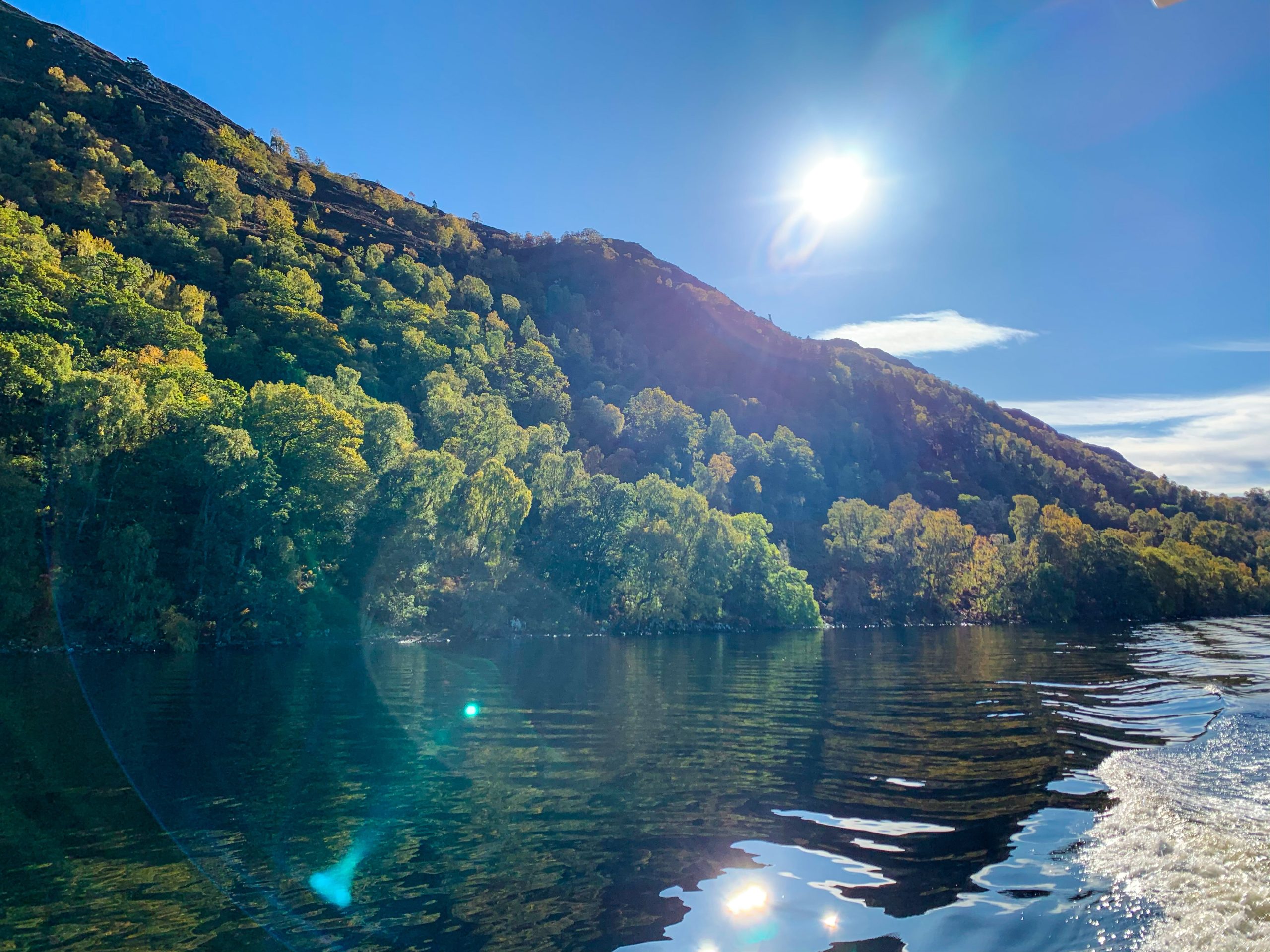
Caledonian Canal
The Caledonian Canal stretches 60 miles along the Great Glen from Fort William to Inverness. This stunning Highlands waterway runs from Inverness to Fort William. It passes through a range of pretty towns and villages, lochs and countryside, providing a beautiful scenic setting for tourists.
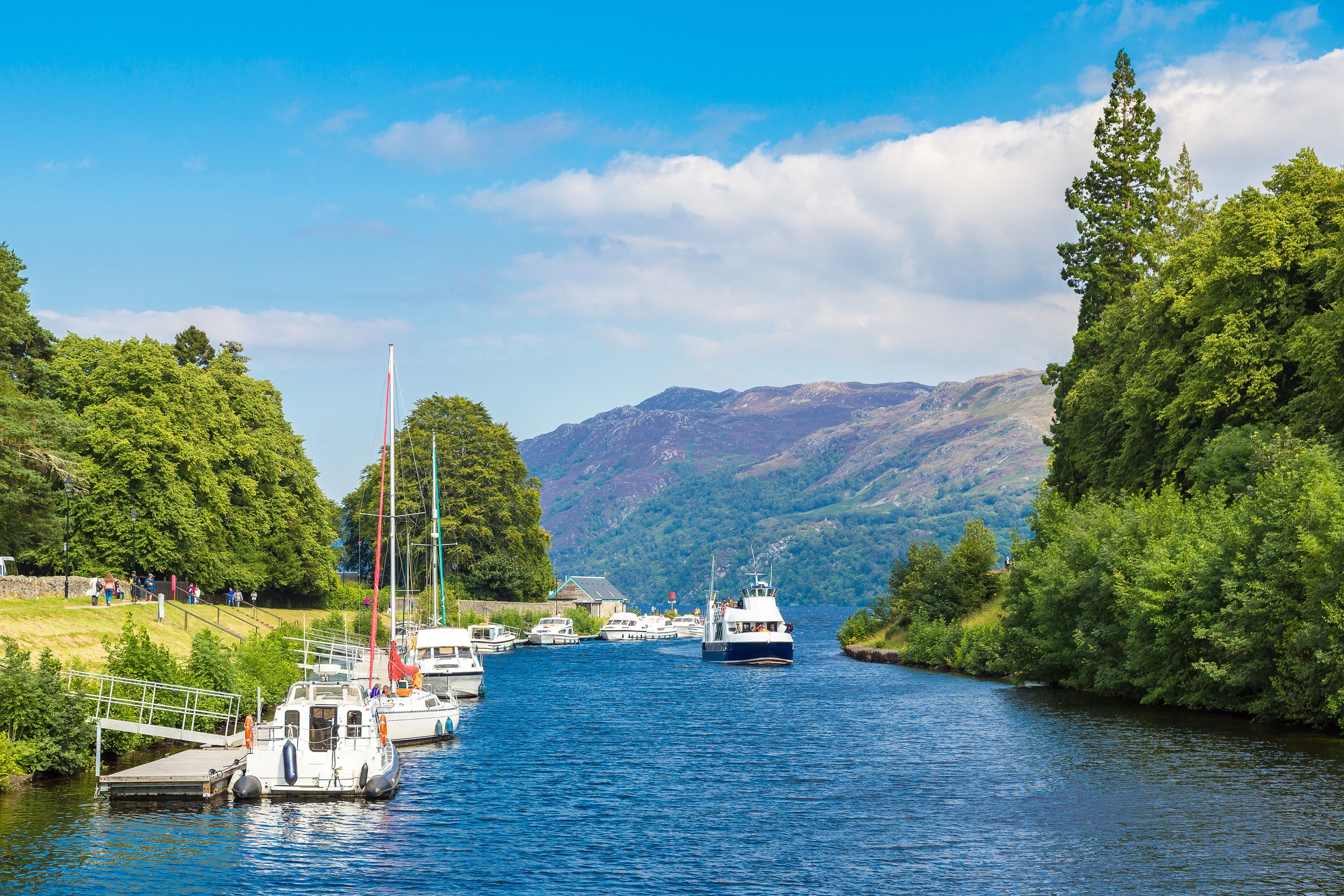
Scottish Highlands
By far the largest region in Scotland, the Highlands covers nearly 10,000 sq miles in northern Scotland. The region is home to some of Scotland’s most beautiful scenery, flora and fauna as far as the eye can see. With welcoming people, a unique culture, dramatic landscapes, and a fascinating history it’s no wonder that it was named as one of National Geographic’s ‘Best of the World’ destinations for 2023.
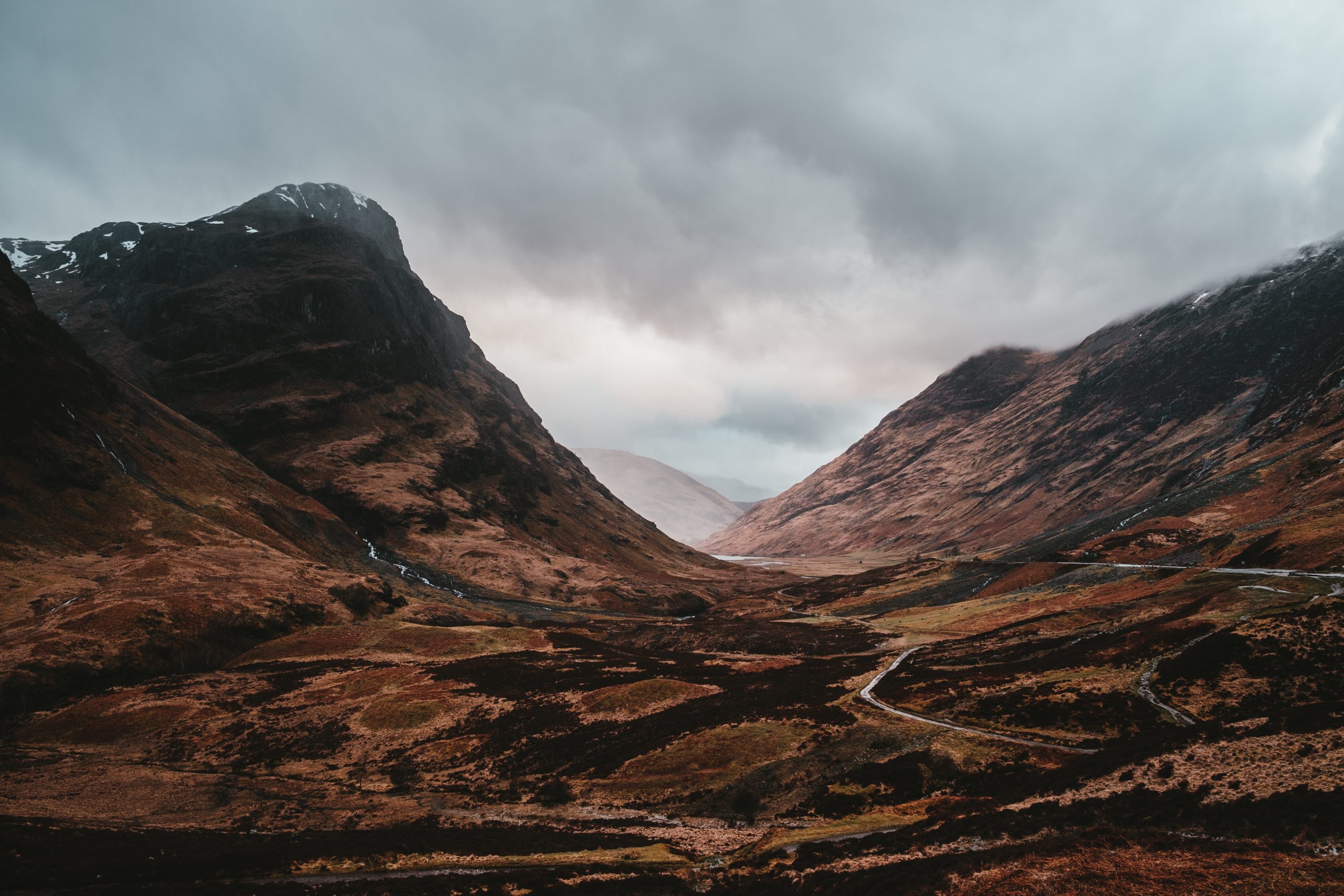
Urquhart Castle
The magnificent Urquhart Castle, once one of Scotland’s largest castles was a highly important fortress which gave control over this part of the Great Glen. For at least the last 1,500 years there has been a stronghold on this site dating from the time of a 6th century Pictish fort. Positioned strategically by the Great Glen, it played a pivotal role in Scottish history witnessing numerous conflicts between Scottish clans and English forces. The Grants developed the current structure in the 16th century and it was raided by their rivals to the west, the Clan MacDonald on a number of occasions. The Great Raid by that constantly warring clan took place in 1545 and saw them strip the castle of valuables as well as 2,000 head of cattle. Evidence shows a large settlement had grown around the castle as trade and wealth developed, ripe pickings for their feuding neighbours. It saw great conflict during its 500 years as a medieval fortress. Control of the castle passed between the Scots and English during the Wars of Independence. The last of the government troops blew up the castle when they left leaving what’s left of the castle.

Today, Urquhart Castle (video tour) stands in ruins, offering visitors a glimpse into Scotland’s medieval past. It is an iconic and popular stop on the Great Glen Way with over half a million visitors annually. Tourists can explore and climb Grants Tower, the main residence of the ruling family, learn about its historical significance and the purpose of the settlements buildings as well as examine a full reproduction of a trebuchet which would have been used to attack the castle in medieval times. The strategic location and picturesque views of the surrounding landscape are the perfect location for some memorable photography.
Loch Linnhe
Loch Linnhe, along the Great Glen Way & Loch Ness route, boasts fantastic scenery and beautiful evening sunsets. The area offers many other outdoor activities like kayaking, fishing, sailing and walking for all visitors to enjoy. The Loch is 31 miles in length and stretches past Fort William.

Loch Oich
Loch Oich is a freshwater loch which forms part of the Caledonian Canal. This narrow loch lies between Loch Ness and Loch Lochy along the route. Loch Oich boasts some beautiful fauna ranging from a variety of fish to reptiles.

Neptune’s Staircase
The magnificent Neptune’s Staircase is a staircase lock on the Caledonian Canal. Designed by canal and bridge builder Thomas Telford, the staircase comprises of eight locks and takes boats roughly 90 minutes to travel up the staircase to the top. It is the longest staircase lock in the UK.
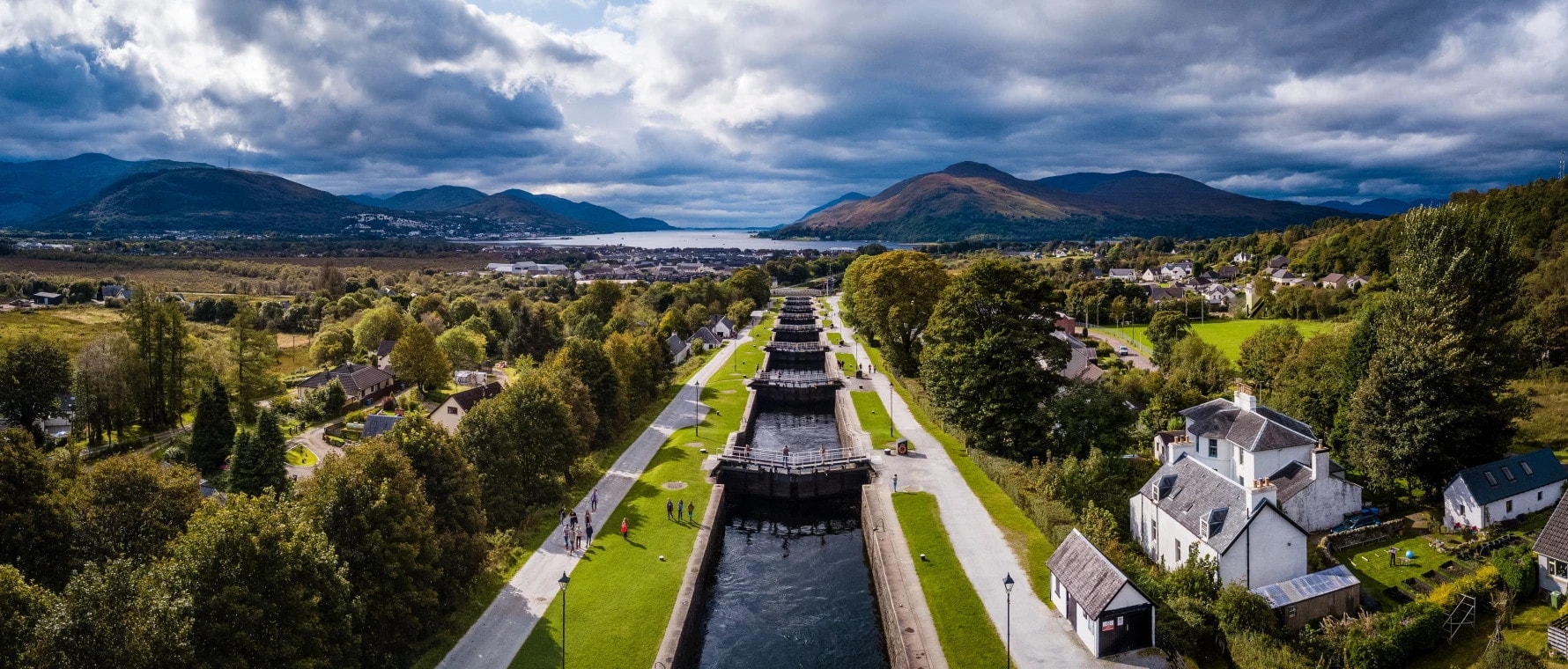
The Jacobite Steam Train (AKA The Hogwarts Express) Steam Train
The Jacobite Steam Train, often referred to as the “Hogwarts Express” from the Harry Potter films, is an historic and scenic railway journey through the Scottish Highlands. Operating between Fort William and Mallaig, this 84-mile round trip offers breathtaking views of some of Scotland’s most stunning landscapes, including Ben Nevis, Loch Morar and the Glenfinnan Viaduct. The train itself is a beautifully restored vintage steam locomotive adding to the nostalgic charm of the experience. The famous ‘Hogwarts Express’ runs from Fort William everyday – giving you a chance to follow in Harry Potter’s footsteps. Hop aboard the Jacobite steam train, and live out your dreams of myth and magic. This trip can be made at the beginning of the Great Glen Way & Loch Ness walking tour. Another great way to experience this iconic steam engine is via our West Highland Line: Train & Hike tour, a fantastic way to experience both the best train journeys and hiking on offer in Scotland.

Wildlife
Wildlife is plentiful along the Great Glen Way & Loch Ness route with a vast array of creatures both great and small. Woodland creatures that are lesser spotted in other areas can be commonly found such as red deer and red squirrels. While exploring the route, you might also come across some critters more rare to the area such as pine martens, wildcats and surprisingly — wild boar. These feral pigs have manifested as a result of escapees from zoos, farms and private collections.
One of the most famous creatures you are likely to encounter is the iconic ‘Heilan Coos’ (Highland Cattle). These are an ancient breed of cattle, dating back to at least the 6th Century and originating in the west of Scotland. They are characterised by their long shaggy coats and distinctive furry fringes (or bangs for our North American friends) and are often a reddish-orange colour, but can also come in darker hues. Their gentle nature and striking appearance make them a beloved symbol of the Scottish Highlands.
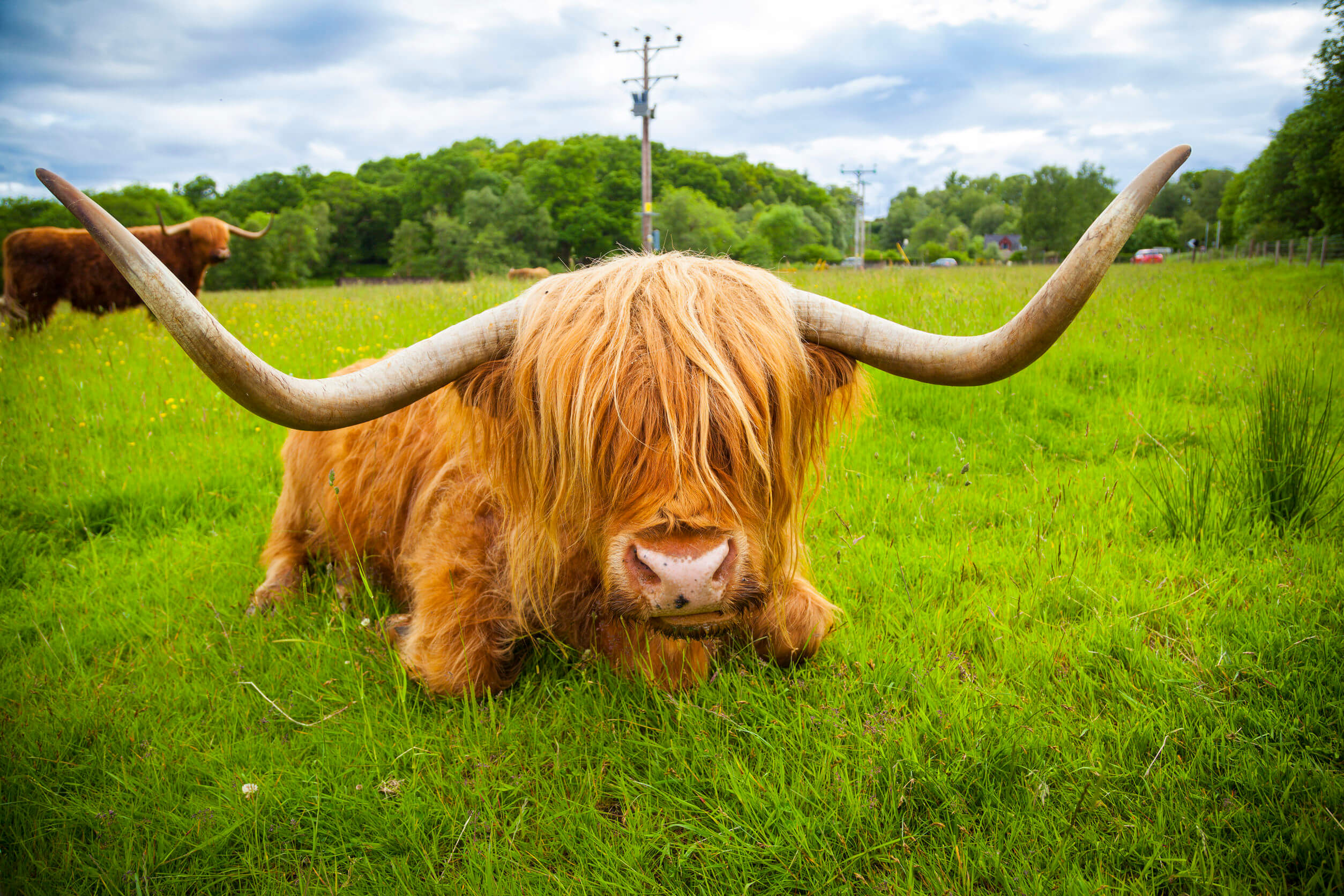
The route is also home to a vast array of bird species, including the unmistakable black grouse, the striking oystercatcher, the majestic buzzard, and the remarkably intelligent Raven. Another species you may encounter are the osprey, known for their fishing skills they can often be seen diving into the water to catch fish.
Insects and mollusks are critical to the biodiversity of the Great Glen. Among the many species, wood ants play a crucial role in the ecosystem helping to aerate the soil and control pest populations. Other notable insects include various species of butterflies and dragonflies, adding to the region’s vibrant community of creatures. However, one of the most infamous insects you’ll encounter is the midge. These tiny, biting insects can be quite a nuisance, especially during the warmer months. For that reason we advise you to have some (preferably DEET Free or home-made) bug spray on hand. Snails also play a vital role in the ecosystem by breaking down organic matter and providing a food source for other animals. To illustrate the importance of being mindful of these creatures, there’s even a charming photo of a ‘slow down’ snail crossing sign, reminding hikers to tread carefully and respect the local wildlife, including the often-overlooked snails.
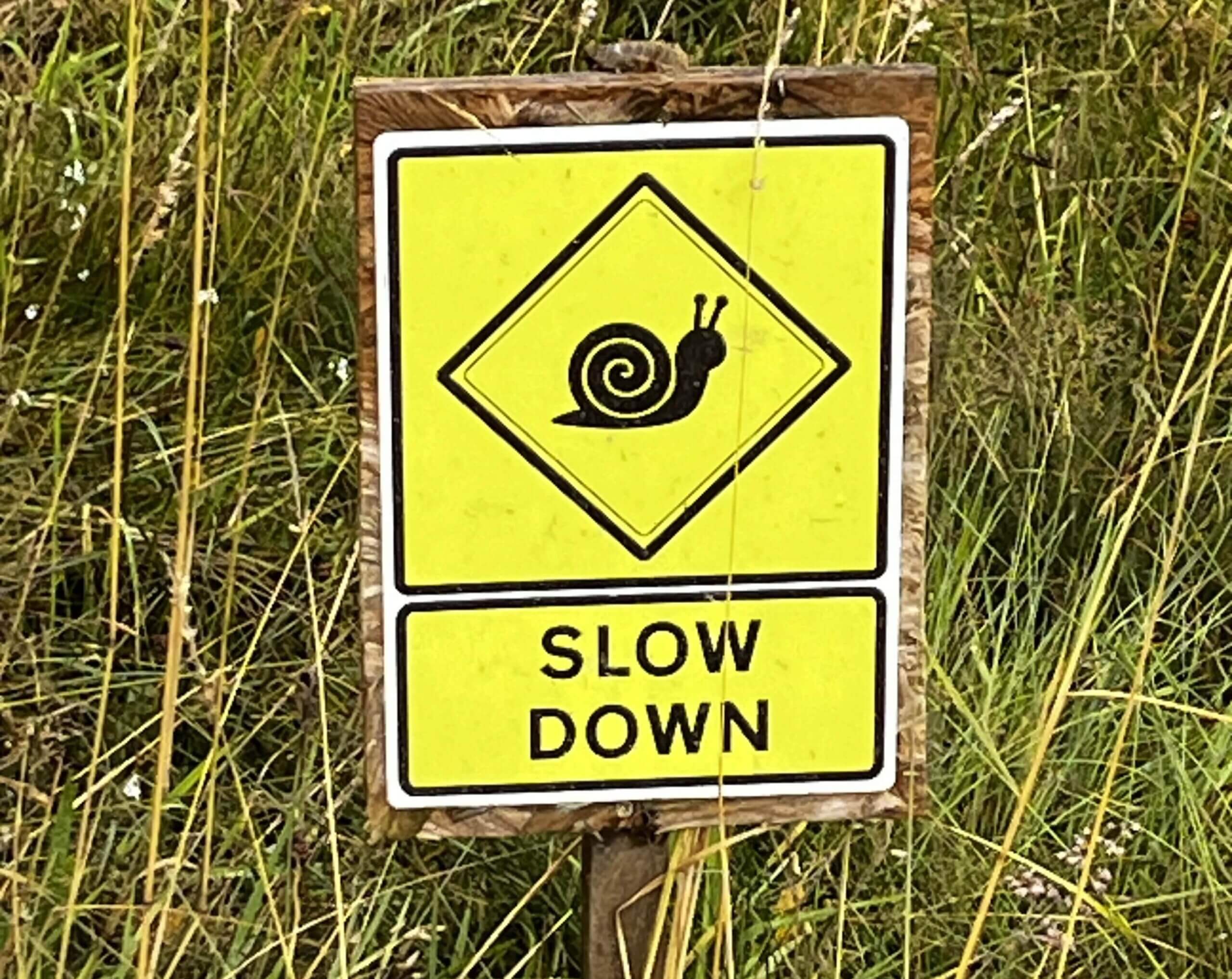
Furthermore, you will also encounter a vibrant variety of plant life along the Great Glen Way & Loch Ness route. From aromatic bog myrtle (which can be used to ward off the aforementioned midges!) to the carnivorous, insect-catching butterwort the region’s unique climate and terrain create a lush, productive and uniquely Scots array of vegetation. The forestry reaches high toward the celestial realm with majestic ancient oaks, iconic Scots pines and charming native woodlands that evoke colourful hues through seasonal blooms such bluebells, daffodils and orchids.
This fantastically varied family of flora and fauna makes the area an ecological haven for those passionate about nature. The diverse landscapes and rich wildlife also provide countless photo opportunities, allowing you to capture the stunning scenery and memorable moments. So don’t forget to bring your camera and take advantage of the picturesque views that await you. It is, of course, great to get up close and personal with any of these animals. However, to maintain these experiences as much as possible it is important that hikers interact as little as possible with the wild animals. The do’s and don’ts regarding wildlife are, as always, self-explanatory. Feeding is of course out of the question, but also try not to run after animals for photos. Leave the animals alone as much as possible. After all, you are visiting their home.
History of the Great Glen Way & Loch Ness
The Great Glen unveils a remarkable tale of a tumultuous tectonic clash that uplifted the Scottish Highlands and carved a colossal crevice stretching across the entire breadth of the nation. Embraced by the lofty peaks of the UK’s most majestic mountains and graced with four vast lochs. This glen encapsulates the abundant heritage of the Highlands and stands as an unparalleled wilderness for intrepid souls seeking adventure. Since then, the Lords of the Isles, Robert the Bruce and the Jacobite’s have given the Great Glen area its fair share of historical stories to tell.
In more recent times, advancements in modern engineering made it possible to construct a network of canals that linked Scotland’s eastern and western coasts. This enabled boats to navigate through the terrain instead of undertaking voyages around the northern coast. Utilizing the majestic waters of Loch Ness, Loch Lochy, and Loch Oich, these canals seamlessly connected each body of water, resulting in the creation of the renowned Great Caledonian Canal.
The Great Glen Way & Loch Ness itself was opened in 2002, and is designated as one of Scotland’s Great Trails. The Great Glen Way & Loch Ness is generally walked from southwest to northeast to follow the direction of the prevailing wind.
Myth & Legend of the Great Glen Way & Loch Ness
The Loch Ness Monster
You have probably already heard of the Great Glen Way & Loch Ness‘ most famous resident – the mythical Loch Ness Monster, affectionately referred to as ‘Nessie’. Unless of course you’ve been living under a rock (or 230 metres underwater as the case may be) for the last 100-odd years. She is depicted as a rather large, long-necked, serpentine creature with greenish-greyish skin and a small head.
Sightings of Nessie date back to ancient times with the oldest attributed to St. Columba (AKA Colmcille), an Irish saint (also said to be one of the last of the Celtic druids), by his biographer St. Adomnán (AKA Eunan). The account states that after a man was attacked by a monster in the river Ness (which flows from the northern end of Loch Ness) St. Columba gave the sign of the cross, which apparently Nessie couldn’t deal with and just left immediately.
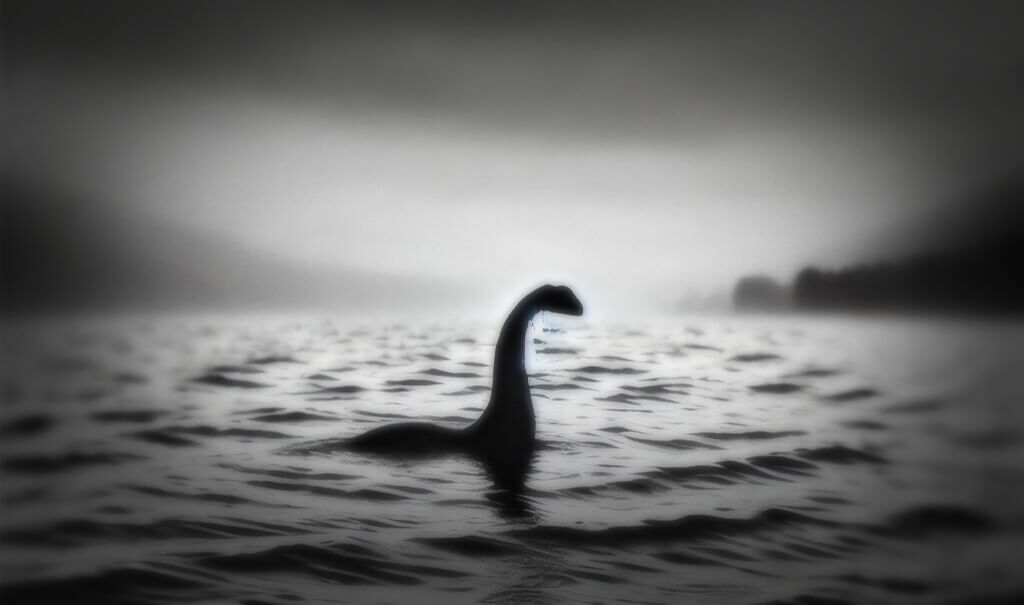
After this, there were various sightings through the centuries but it was not until the mid-1930s when reported sightings escalated, and the first supposed photos of Nessie were taken, that we began to see the true Nessie Hysteria. In 1934 there is an increase in interest with the Daily Mail publishing what is now known as ‘The Surgeons Photograph’, the famous blurry image most of us immediately think of when Nessie is mentioned. Later proven to be a hoax, this image is an iconic piece of Forteana and Scottish folklore.
After another near century of sightings, investigations and hoaxes, and despite the lack of concrete evidence and the debunking of many sightings, the allure of Nessie continues to draw countless visitors each year. The case for Nessie’s existence is still a popular topic among both cryptozoologists and Scottish tourists alike, with more than 85,000 people from all over the world people visiting the Loch Ness Centre in 2024, with many of them joining the hunt for Nessie with regular events like The Quest where monster hunters meet to “search, debate, and delve into the mysteries that shroud this legendary loch” – a perfect addition to a hiking adventure for those with a curious mind.
Kelpies
Kelpies are mythical water spirits from Scottish folklore often depicted as shape-shifting horses that inhabit lochs and rivers. Not unlike the more well-known mermaid and the siren from Greek mythology, these creatures are said to lure unsuspecting travelers to their doom. Along the Great Glen Way there are many such lochs and rivers.
Wild Haggis
Wild haggis is another creature from Scottish folklore, often humorously described as a small, four-legged animal with legs of different lengths to help it navigate the steep hills of the Scottish Highlands. According to the legend, this unique adaptation allows the wild haggis to run around the hillsides in a single direction without tipping over. See the below video for more information.
Great Glen Way & Loch Ness Pop Culture
Film and TV
Harry Potter
Harry Potter and his friends regularly passed through the Scottish Highlands as they made their way to and from Hogwarts aboard the Hogwarts Express. One of the most famous images from these movies is the sight of the train crossing the marvellous Glenfinnan Viaduct. This trip can be made at the beginning of the Great Glen Way & Loch Ness walking tour in Fort William.
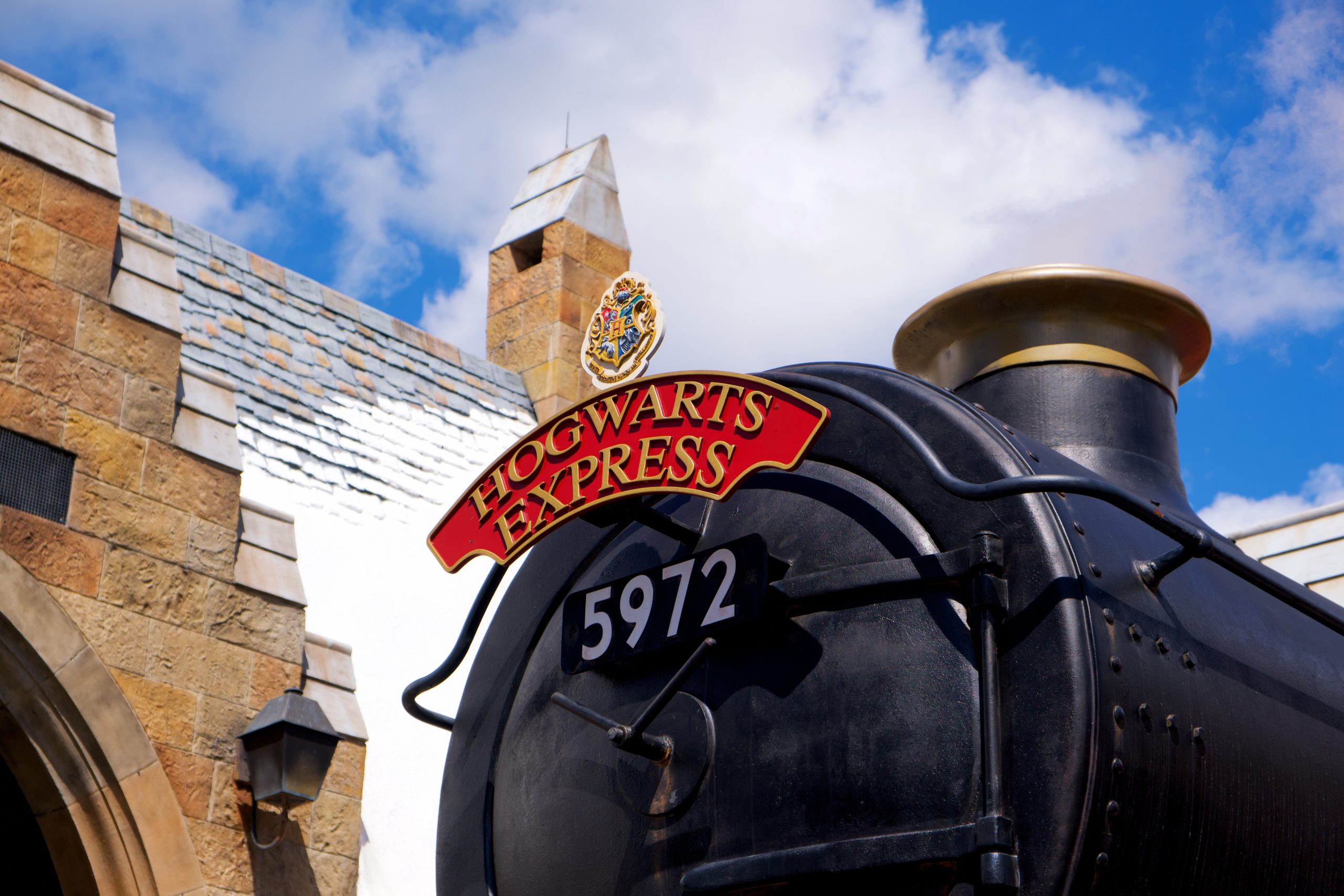
Brave (2012)
Urquhart Castle, which can be seen along the Great Glen Way & Loch Ness on the shores of Loch Ness, inspired the creators of this film when they visited Scotland for ideas in 2006 and 2007.

Braveheart (1995)
The area around Fort William has starred time and time again in a series of movies. Glen Nevis stars heavily in Braveheart.
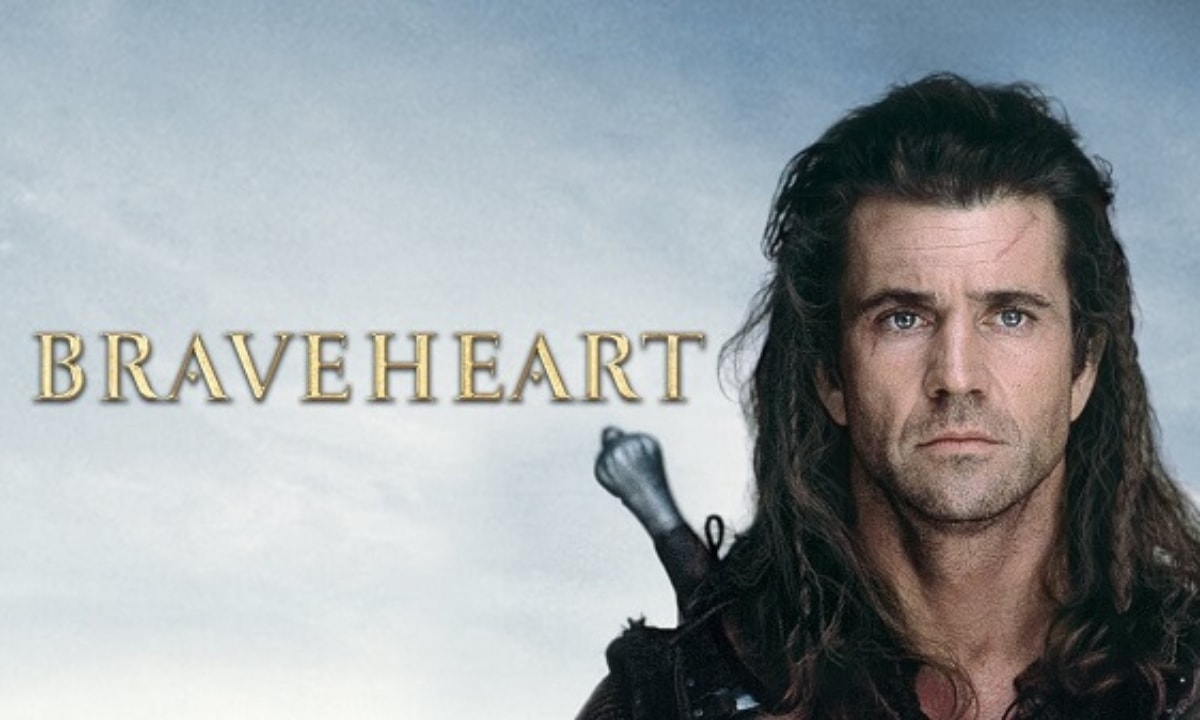
Rob Roy (1995)
This cattle rustler turned folk hero was memorably played by Liam Neeson in Rob Roy. The film enjoys a series of spectacular locations all over Scotland and two in particular around the Great Glen.
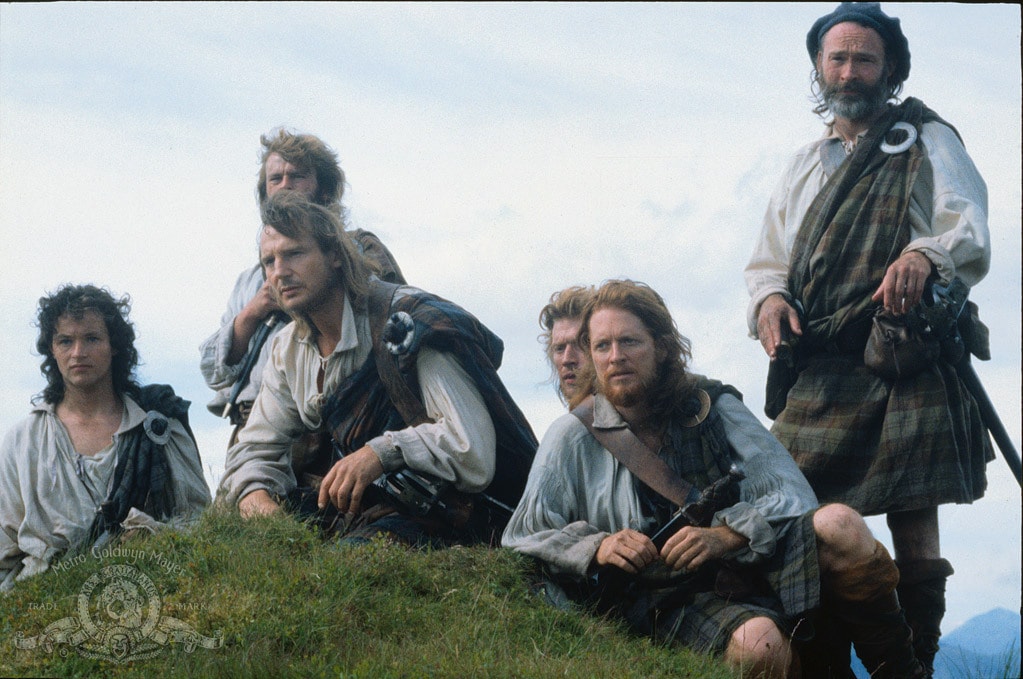
Loch Ness Monster on the Big and Small Screen
Nessie (back again so soon?), Scotland’s beloved enigma, reigns as one of its greatest celebrities. Her presence has graced the silver screen almost as frequently as she has tantalised us with grainy and inconclusive photographs. From her inaugural appearance in the 1934 feature film “Secret of the Loch” to her cameos in renowned productions like “Scooby-Doo,” “Lassie,” and “Doctor Who,” Nessie has made her mark in countless films and TV series.
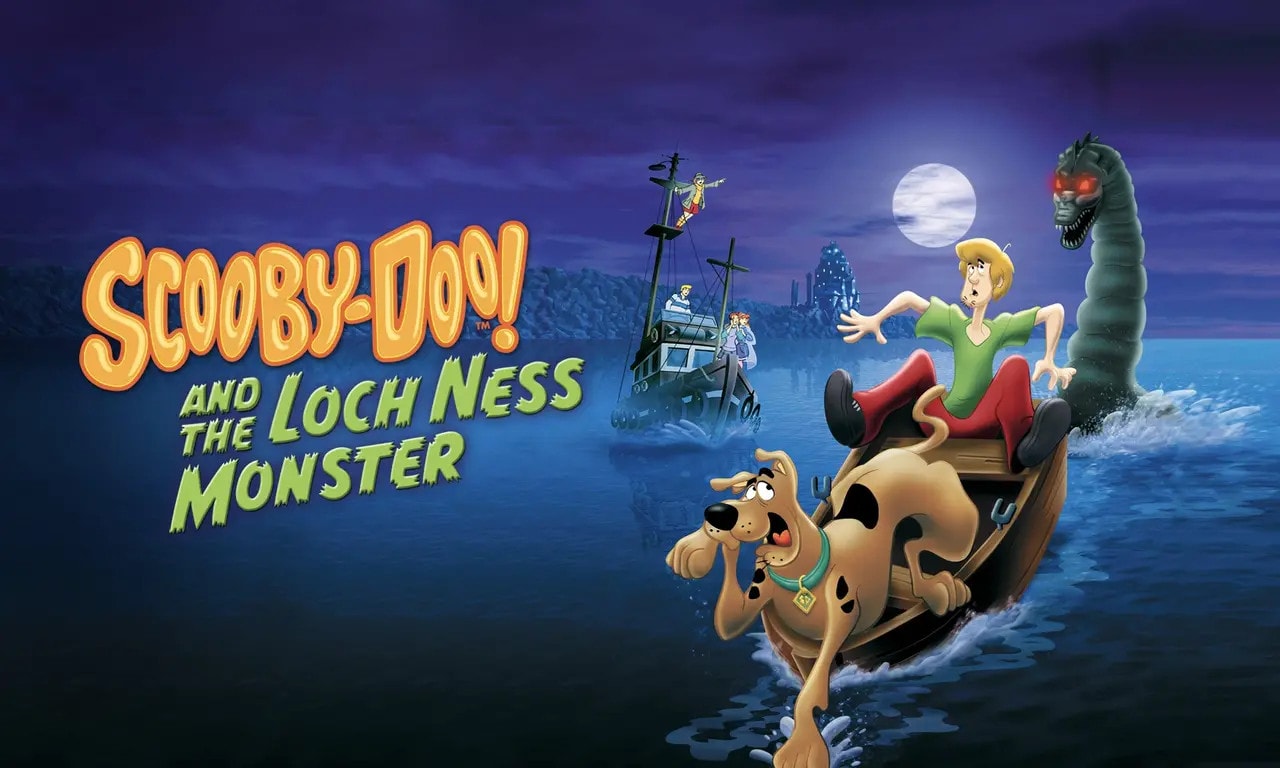
Food and Drink
Below are just some of the food and drink synonymous with the country of Scotland that should be tried while walking the Great Glen Way & Loch Ness:
Haggis
When you think of Scottish cuisine, Haggis is probably one of the first things that comes to mind. It is a savoury pudding which is made up of a delicious combination of sheep’s pluck (organ meats), oatmeal, onions, salt, and spices. To some, haggis isn’t often the prettiest of foods, but makes up for it with its palatable taste.
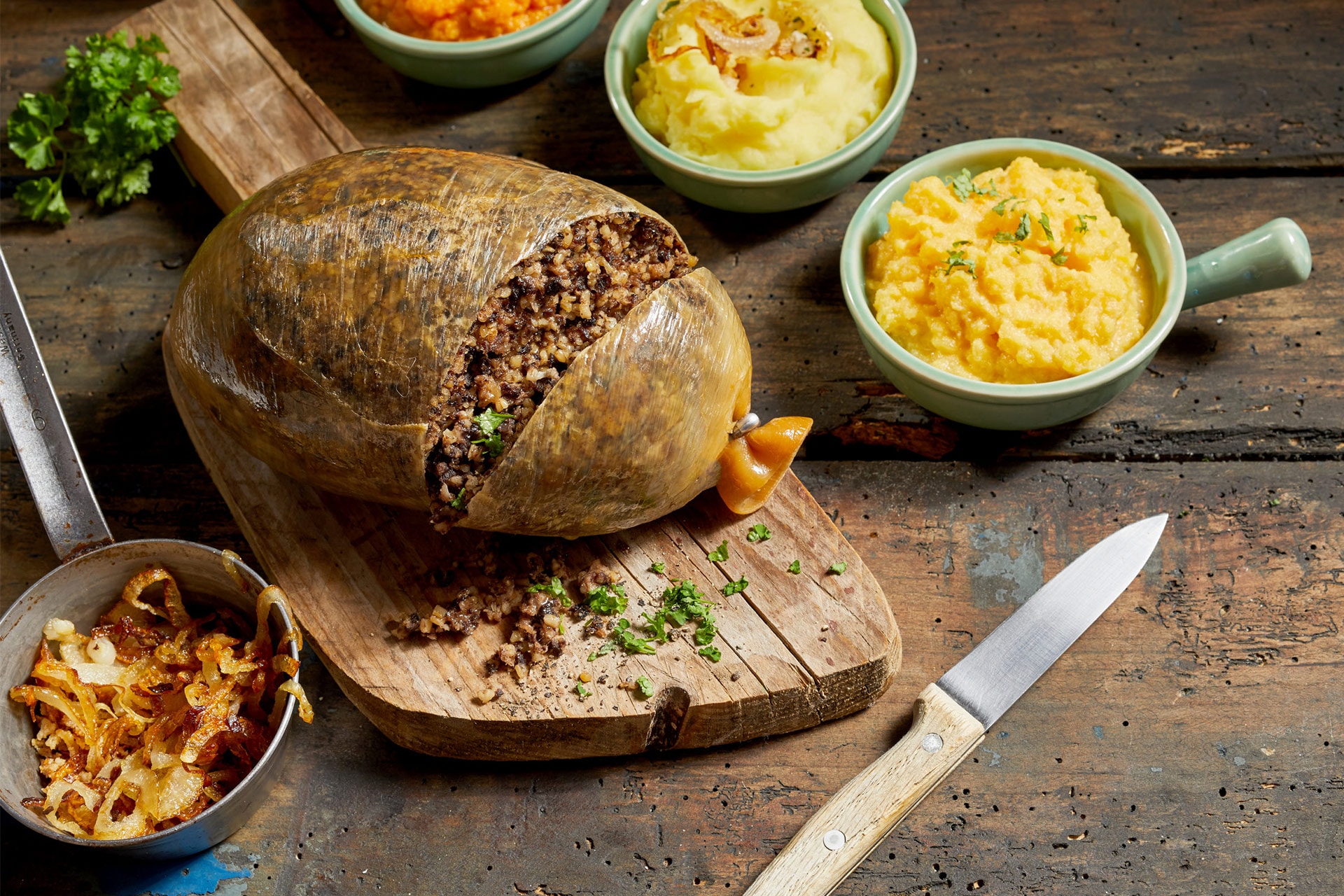
Tattie Scones
Whenever you see tattie in Scotland, you can be quite sure they are referring to potatoes. Tattie scones then are traditional potato scones made in Scotland. They are made from mashed potato, flour and butter which is then rolled out and put on an ungreased griddle to cook. It is said that no Scottish breakfast is complete without a Tattie scone – and we wholeheartedly agree!

Full Scottish Breakfast
Depending on where you go, a full Scottish breakfast is typically made up of sausages, bacon, baked beans, hashbrowns, black pudding, mushrooms, tattie scones, fried eggs, tomatoes, and toast. Found in B&B’s, restaurants, and cafes up and down the country, it is the ideal breakfast to set you up for a great day of exploring one of our Scottish trails.

Seafood
The seafood caught in the surrounding waters of Scotland is known for its fresh quality. So much so that it is served in many of the finest restaurants across Britain and Europe. Examples of this fabulous seafood includes smoked salmon, seatrout, scallops, lobsters, and oysters. For all of you fish and chip lovers out there, you have not lived until you have tried a Scottish fish ‘n’ chip!
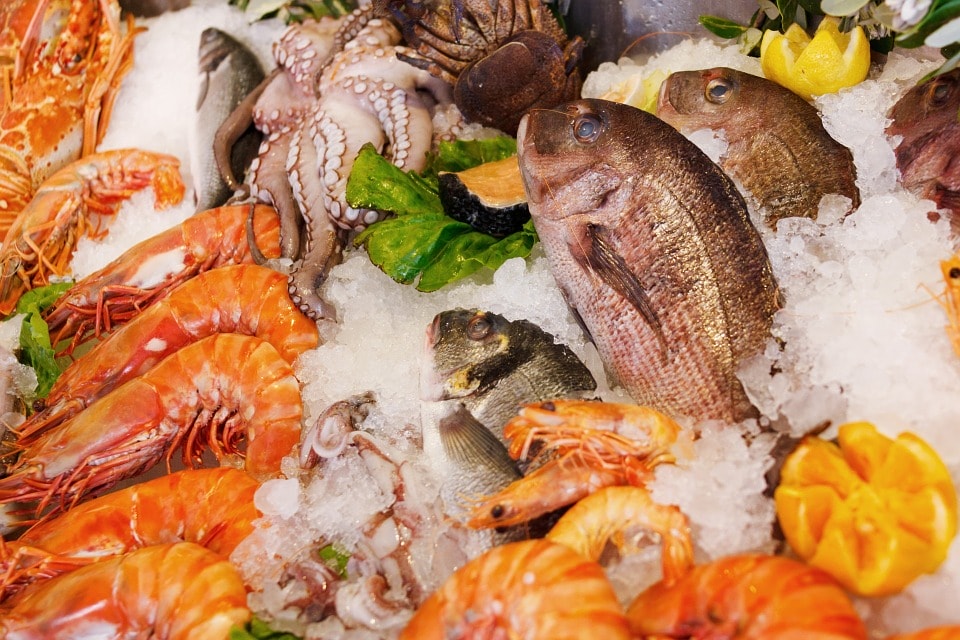
Tablet
Commonly mistaken for fudge, tablet is a medium-hard sweet which originated in Scotland. The sugary confection is typically made from butter, condensed milk, and sugar. It is then often flavoured with anything from vanilla, chocolate, raisins or even rum.

Shortbread
Shortbread biscuits, otherwise known as shorties, are a traditional Scottish biscuit which are unique as baking powder or soda is not used in the process of making them. Instead, the scrumptious shorties are made with sugar, butter, and plain flour. We highly recommend that you ‘dunk’ yours into your tea or coffee…thank us later!
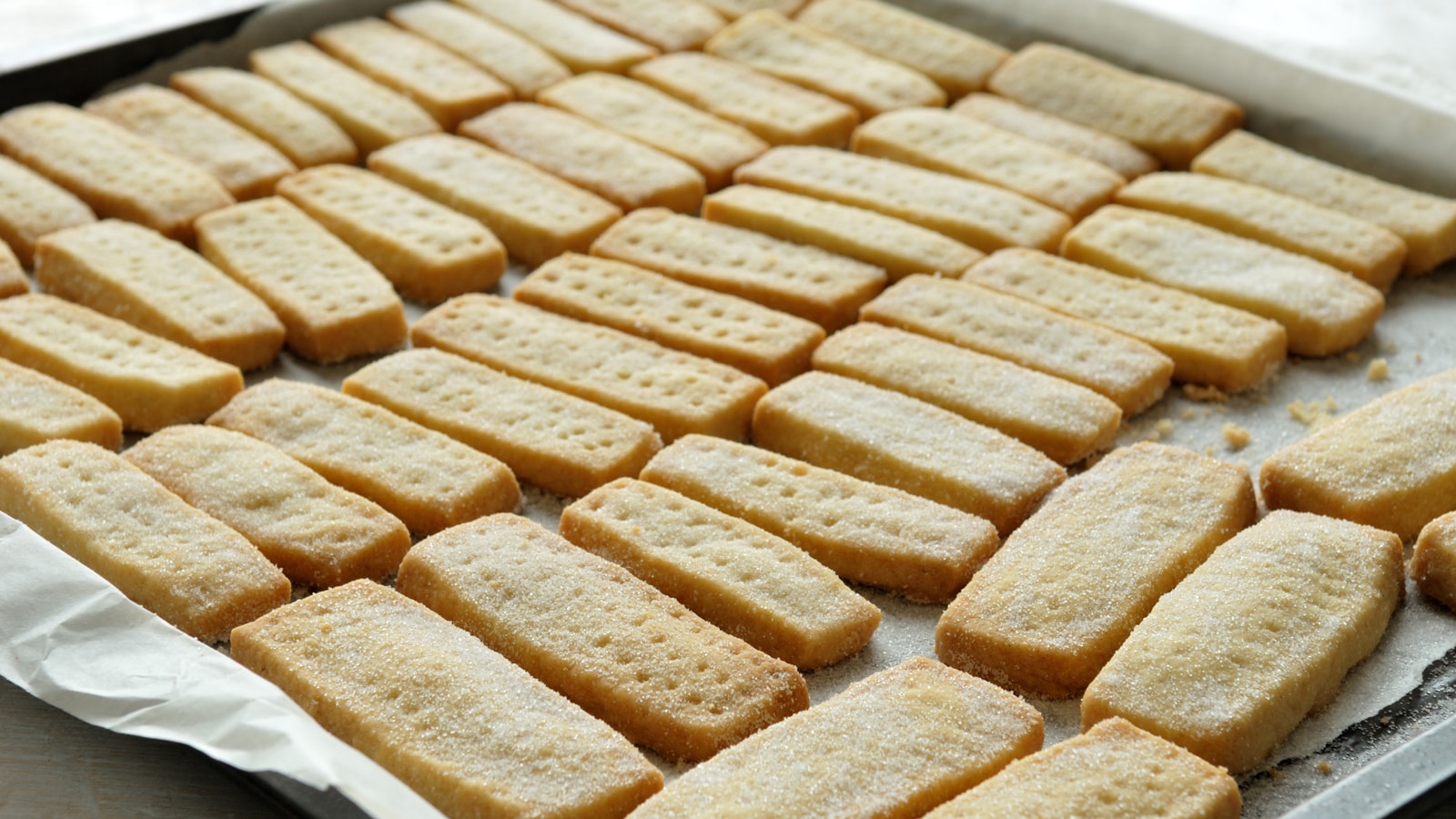
Scotch Whisky
It is hard to ever mention Scotland without ever thinking of their world-renowned scotch whisky. It can be made from malted barley, wheat and/or rye with every whisky having to be aged in an oak barrel for at least three years. With the first written record of whisky recorded in 1494, there are now around 140 whisky distilleries currently operating in Scotland. Fancy a tipple? You will be able to visit Ben Nevis Distillery upon your arrival at Fort William. If you’d fancy more than just a tipple then check out our Speyside Way & Cairngorms.

Irn-Bru
Often referred to as Scotland’s second national drink, Irn-Bru is an orange-coloured soft carbonated drink that holds a distinctively sweet, tangy taste. It is so popular throughout Scotland that it has long been the best-selling carbonated drink ahead of Coca-Cola and is the third largest selling soft drink across the United Kingdom. The Scots are such fans of this fizzy pop that they even use it to glaze their ham or to make cupcakes!
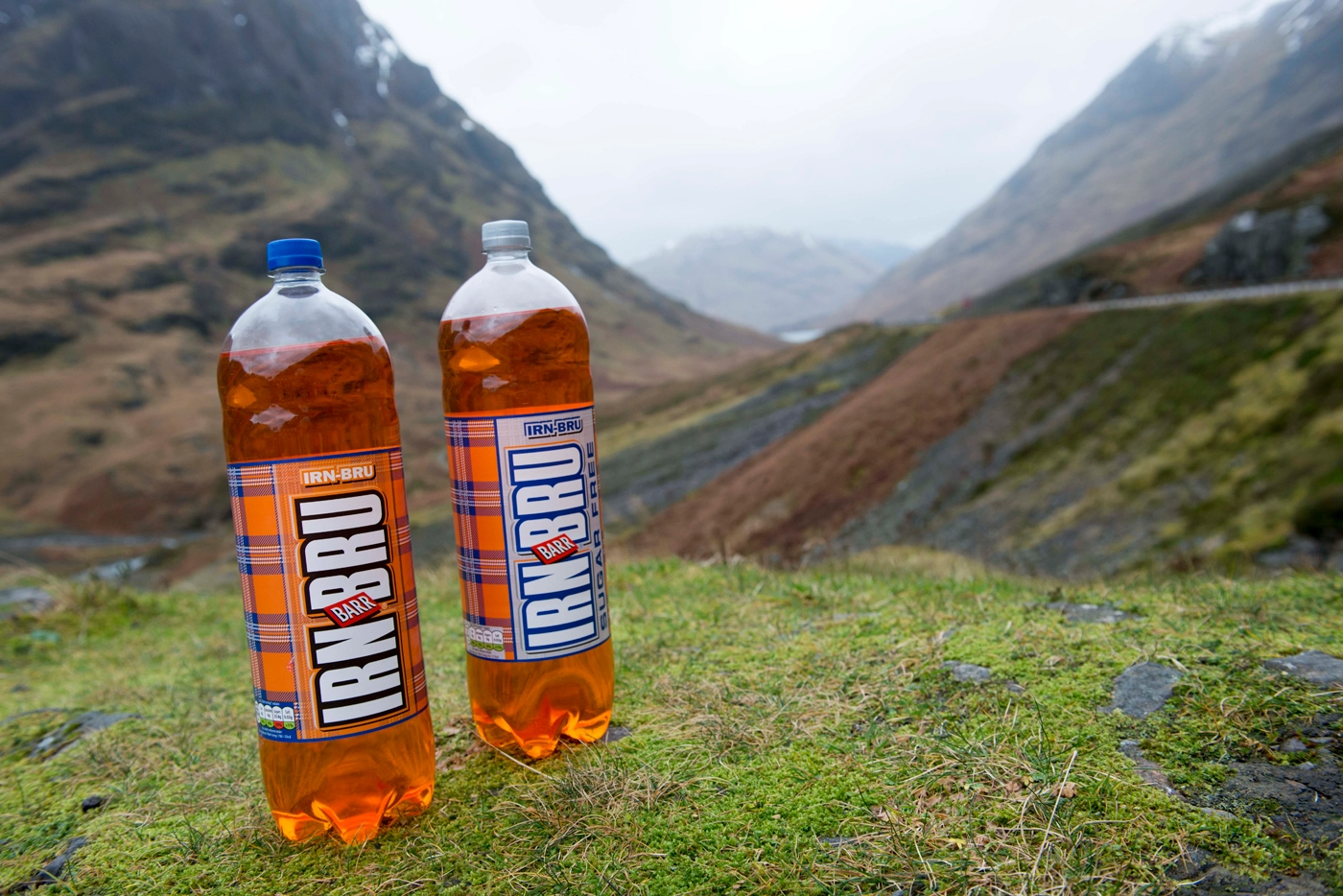
Is the Great Glen Way & Loch Ness Vegan Friendly
The vegan diet has become more and more popular throughout Europe in recent years, and you will find that there are plenty of vegan options available in most eateries. Each of the accommodation we work with at Hillwalk Tours have given us their guarantee that vegan breakfasts will be catered for once they have been informed. That being said, some of the more rural locations of the trail may have limited options so we advise bringing certain items such as plant-based milk, nut butters or protein powders if you so choose.
In addition, the following apps show restaurants which offer vegetarian and/or vegan options:
Nearby Trails
There are various other Scottish & UK trails available to you once you have completed the Great Glen Way & Loch Ness. Here are some other Hillwalk Tours hiking tours we offer:
- West Highland Way
- West Highland Line: Train & Hike
- Fife Coastal Path
- Rob Roy Way
- Speyside Way & Cairngorms
- St Cuthberts Way
- Hadrian’s Wall Path
Great Glen Way & Loch Ness Tips and FAQ
Probably one of the most common questions asked when hiking the Great Glen Way & Loch Ness or any trail for that matter is – what will I pack?
Once you have fully booked your Hillwalk Tours hiking holiday, you will receive a detailed ‘recommended equipment’ list inside your Walking Pack. For those who are still unsure of what to bring, here are some of the things we advise you bring with you along the Great Glen Way & Loch Ness:
– Waterproof Clothing
– Fleece and other warm clothing
– Base Layer
– Light, comfortable Trousers
– Wicking Socks
– Suitable Hiking Boots
– Backpack/Rucksack
– Hat and Gloves
– First Aid Kit and Foil Blanket
– Whistle and Torch
– Insect Repellent
– Mobile Phone
– Plug Adapter/Converter
For more on what to pack – check out these packing musts.
As it is such a popular National Trail, you will never be alone as such while walking the Great Glen Way & Loch Ness. You will always meet people along the way with the only exception of course being in the depths of winter.
If you experience any difficulty or an emergency of any level, it is advised that you phone the relative emergency services on 999 or 112. It is also important to note that mobile/cell phones can call this number with or without mobile/cell phone reception.
For those who have fully booked their Hillwalk Tours hiking holiday on the Great Glen Way & Loch Ness we provide 24/7 on-call support to all of our customers and you will also receive a detailed description on how to remain safe on your hike.
Yes, many people chose to take the Great Glen Way & Loch Ness as a solo hike. As a result of its popularity, the trail is also deemed safe for female solo hikers.
We believe that the beauty of the Scottish countryside should be enjoyed by everyone. With this in mind, we have designed our hiking tours to cater for practically all levels of fitness. Our range of ‘Gentle’, ‘Moderate’ and ‘Challenging’ hikes in all regions allows you to decide how far you wish to walk each day and the pace you set. So, whether you are a novice walker or an experienced hiker, we always have a tour to suit you.
Our 7-Day tours include 5 days of hiking. The first and last days of all our hiking tours are travel days used to transfer to/from the town where your hike will begin/end. If you would like to hike for 7 days, simply select one of our 9-Day tours.
Generally, our tours take place between the months of March to October to hopefully allow for good, dry weather and longer days of daylight while you carry out your tour. This will hopefully ensure that you enjoy your hiking experience with us to the fullest. You can also check out the individual tour page for the Great Glen Way & Loch Ness on our website.
To ensure you’re fully equipped and informed throughout your trail we provide a very informative ‘Walking Pack’ that you take with you on your trail. This pack has every detail you will need to successfully finish your trail without any disruption. We advise that you carefully look through this pack before embarking on your journey so that you have some sort of idea of where you’re going and what you will entail throughout the journey. Included in this pack is as follows;
– Route notes (prepared by a member the Hillwalk Tours team who has walked every step of your tour)
– Detailed hiking map(s)
– Waterproof map-case
– A sneak-peak at where you will be staying
– Our tips on the most interesting attractions to visit along the trail
– A look at fascinating local history
– A guide to the best places to eat and drink
– Mountain safety information, emergency contact details & the country code
A single supplement is an additional charge for walkers booking single accommodation (a room for one person).
This is due to the fact that most accommodation providers price their rooms for double occupancy, meaning that they don’t discount the rooms even if they are only occupied by one person. Furthermore, accommodation providers have outlined that the cost of cleaning the room is the same regardless of how many people are in it, and also the potential cost of giving up a double occupancy (or more) sized room for just one person at a cheaper rate, when they could sell the room to more than one person at the normal rate, is too high.
Therefore, the total tour price for individuals who request a single room is “the price per person plus the single supplement”. This added supplement covers the extra costs associated with accommodating a single person in their own room.
The Great Glen Way & Loch Ness Image Gallery

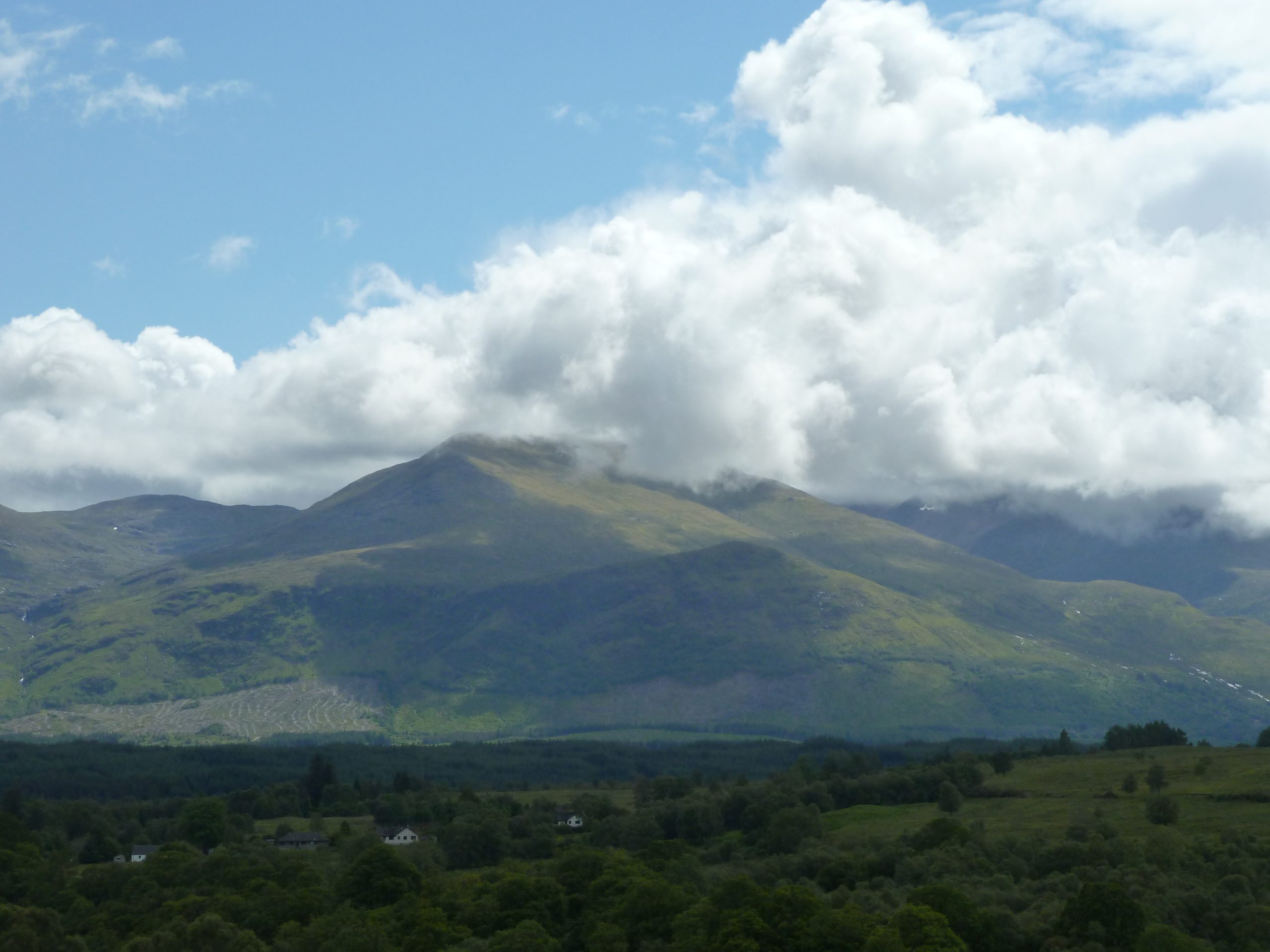
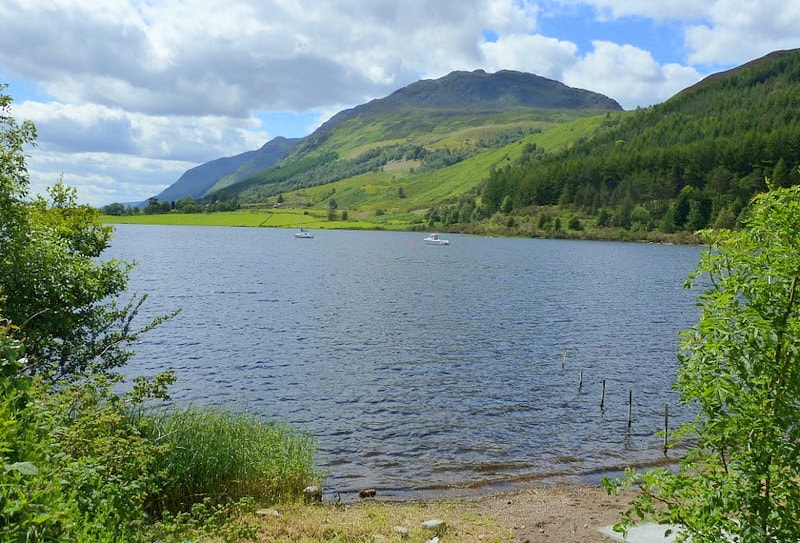
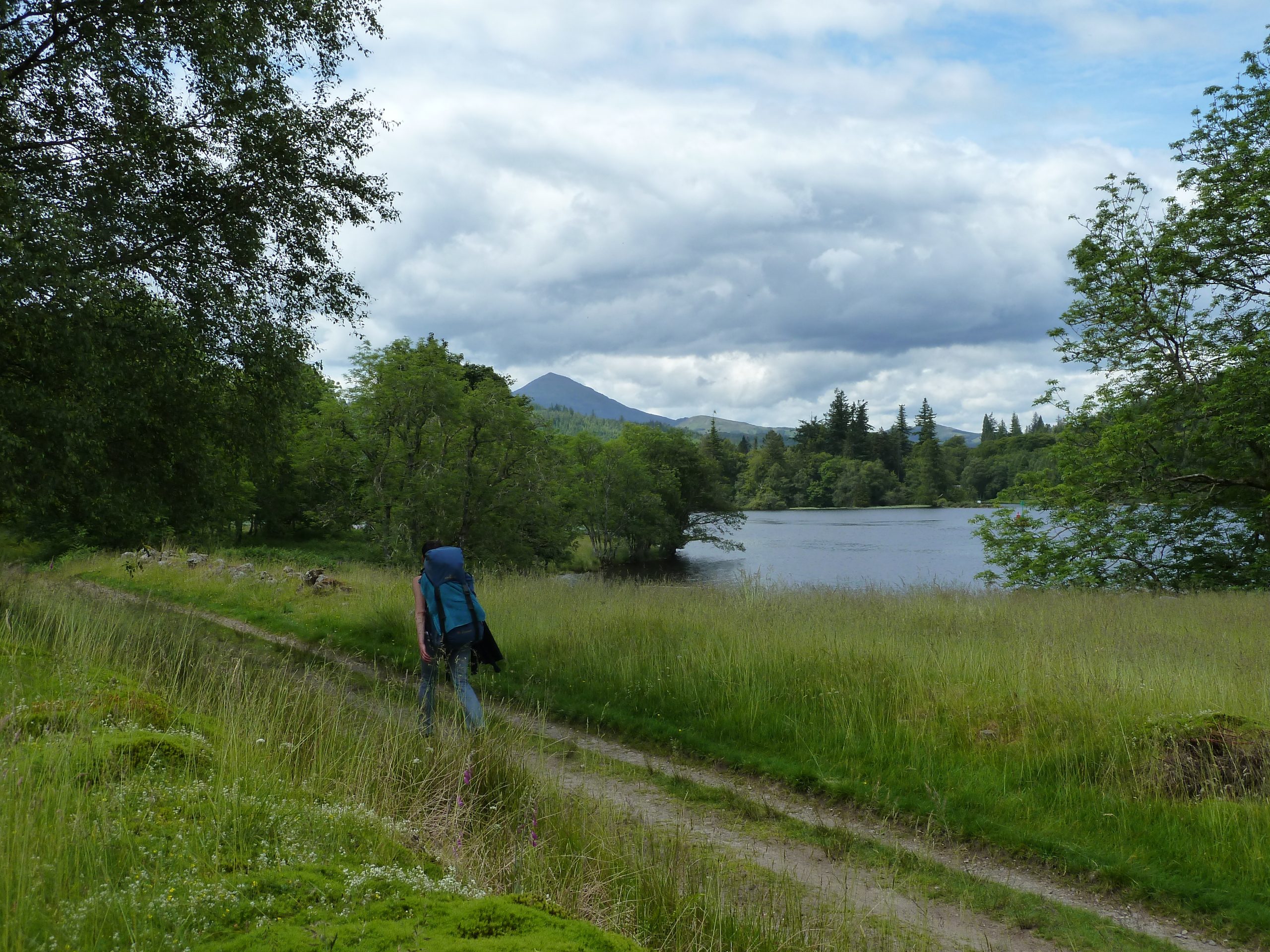

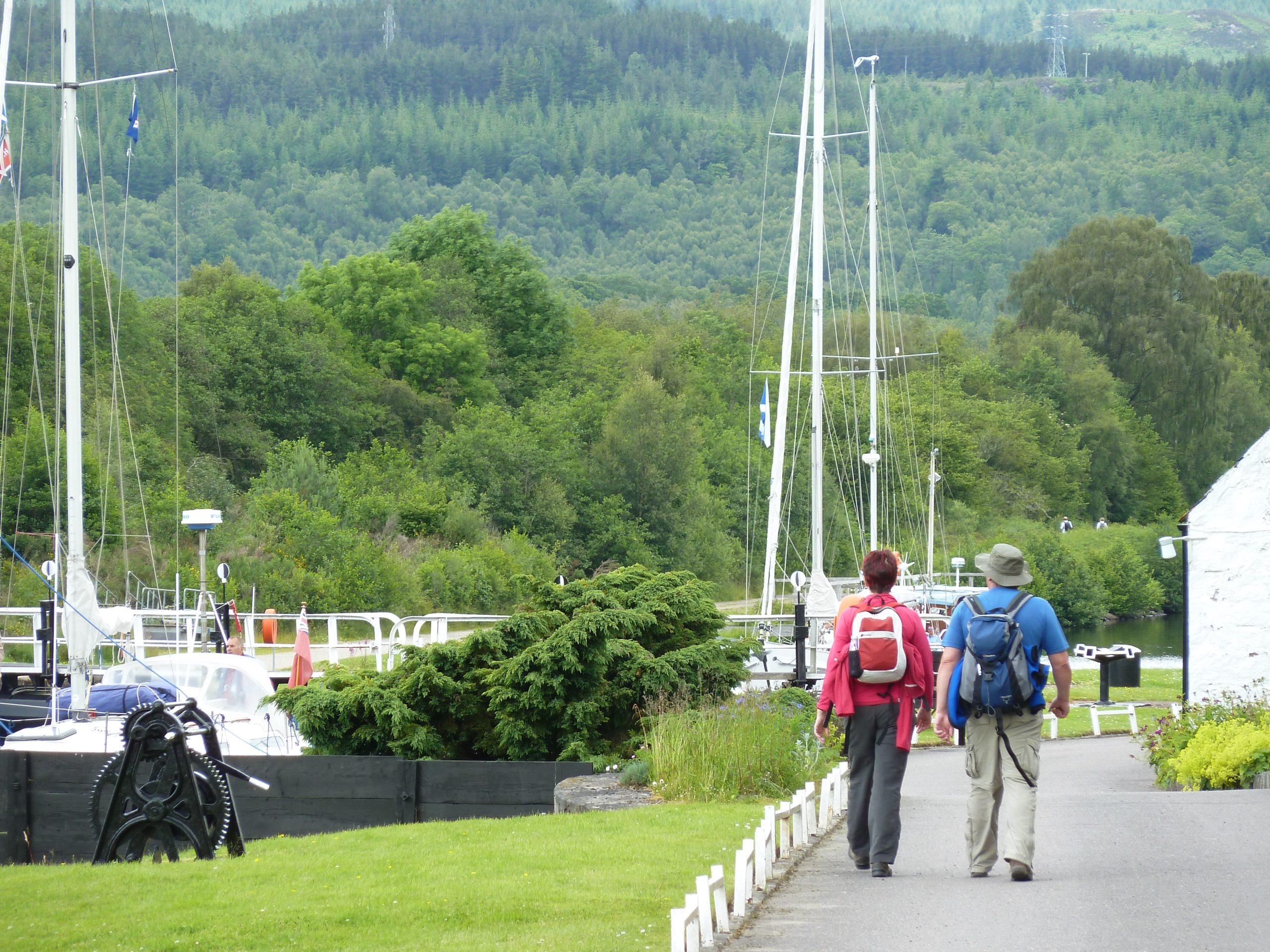
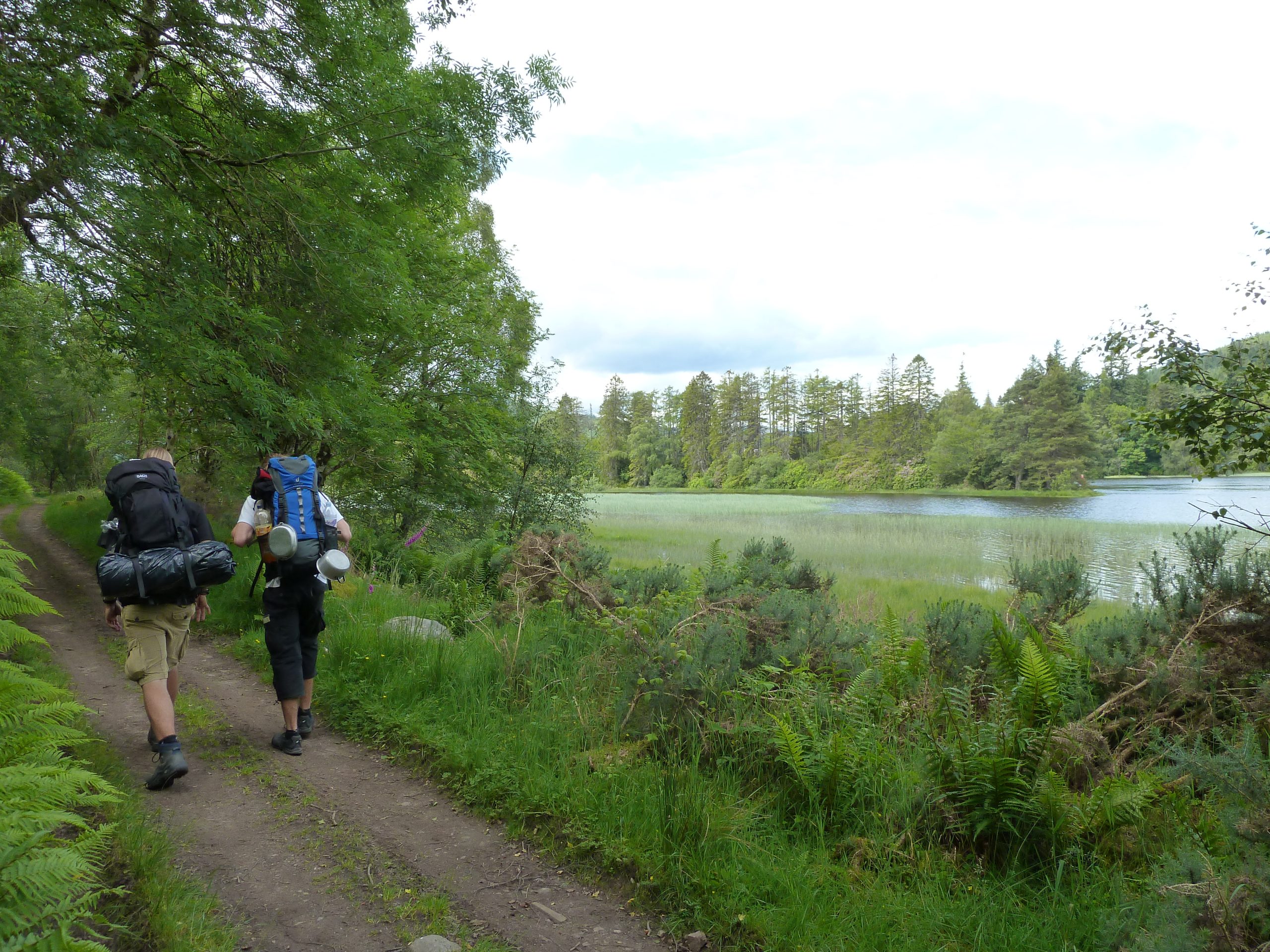
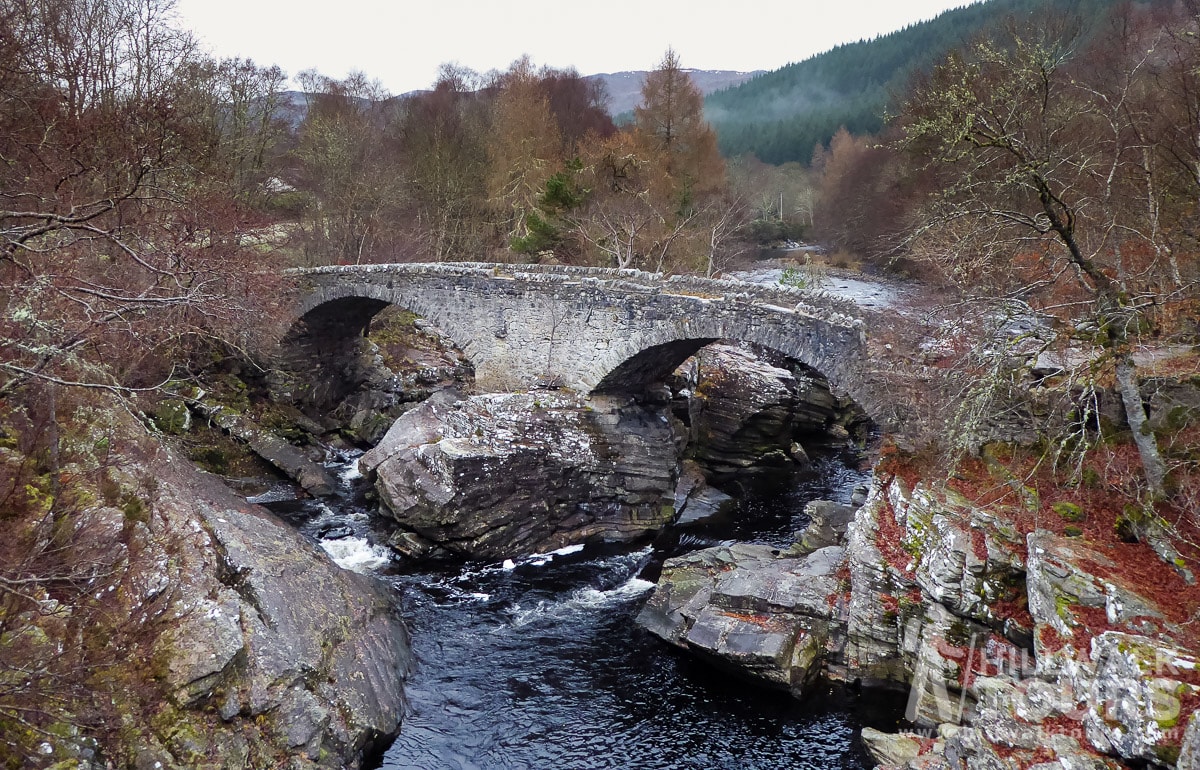
Hillwalk Tours
About Us
Hillwalk Tours is an award-winning walking tour operator which specialise in self-guided walking holidays in Ireland, Scotland, England, Wales and along the Camino de Santiago in Spain. Our goal is to create happy experiences for all of our customers, suppliers & staff.
Fill out the form below with any questions you may have and we will get back to you promptly.
Follow us on our social media platforms
Leave No Trace
We like to walk in nature and since you are reading this – we believe you do too! It is important to ensure that our impact on the environment is limited so that hikers can enjoy the same view after us. The rule applies: when you leave, make sure that nature looks the same as when you arrived or simply put “leave no trace.” As more and more people take to the great outdoors, our collective mark on the environment increases.
What does this mean in reality? Of course, do not leave any rubbish or waste behind. Do not collect stones, flowers, or other “souvenirs”. Don’t carve your name on a tree or break branches… I think you get the drift. It is imperative for walkers to play their part in making sure litter, damage to vegetation and all forms of pollution are limited.
Noise can also be a form of pollution. Whoever walks through a forest talking and laughing loudly, for example, ruins the peace and quiet of other walkers, who can no longer hear the birds. The same goes for cell phones that suddenly start ringing. Keep the volume down and respect your surroundings. Ultimately, the point is to ensure that as many people as possible can enjoy walking through nature. So that applies to you, but also to those who tread the path after you.
Hillwalk Tours proudly supports sustainable tourism and loves the countryside as it is – wild, peaceful and clean. We are proud to support the “Leave No Trace” initiative that aims to preserve the natural beauty of each nations countryside where we offer hiking holidays. We try to create happy experiences for our accommodation too, and the restaurants, shops and taxi companies that serve our walkers. These are often small businesses located in isolated areas that have been left behind by urban migration and a lack of investment in rural regions. Their warm hospitality and friendly welcomes epitomise the magic of a Hillwalk Tour and we’re dedicated to helping keep these rural communities alive.
The Benefits of Hiking
In recent years, walking and hiking outdoors has been widely reported to have numerous physical and mental health benefits. The following are examples of some of these benefits:
Improve strength and fitness
- Weight loss
- Muscle gain
- Improve metabolism
- Improve digestion
- Better quality sleep
- Increase in Vitamin D
- Improve discipline
- Sense of achievement
- Living in the present moment
Hiking Equipment List
For a more in-depth list of recommended hiking equipment list, click here.

